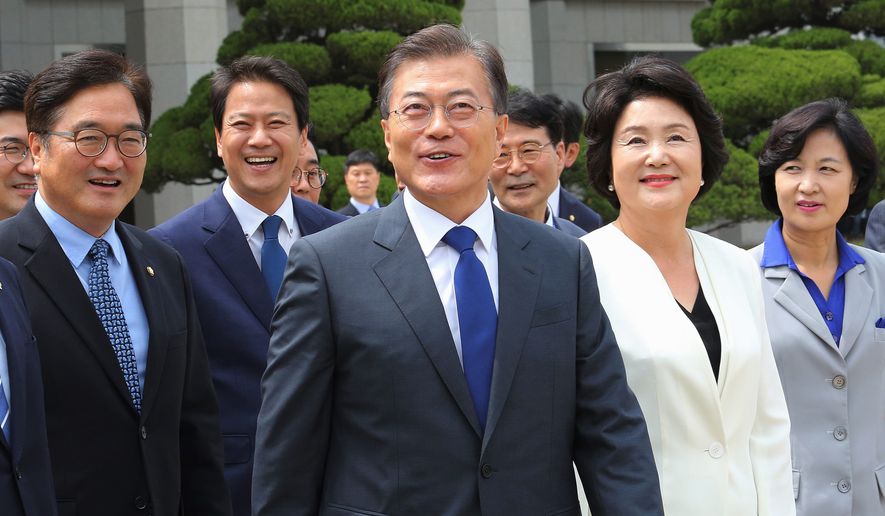OPINION:
If North Korea were a zoo and not a prison camp, appropriate signage would read: “Please don’t pet the porcupine.” When South Korea’s new president arrives at the White House on Thursday, Donald Trump should remind his guest that predecessors who ignored the need for due diligence learned a lesson more painful than a mere porcupine prick. The smart approach to Pyongyang is to keep a healthy distance.
President Moon Jae-in, elected last month to replace Park Geun-hye following a bribery scandal, is expected to spend much of his time with President Trump wrangling over how to deal with North Korea’s volatile Kim Jong-un. The “crazy fat kid,” as Sen. John McCain famously called him, has missiles and cannon pointed at Seoul while he waits for his technicians to develop the nuclear warheads they promised. It’s essential that the two leaders, whose instinctive reaction to danger differs, find a way to stand shoulder-to-shoulder against North Korea.
Since greeted in office by Mr. Kim’s incessant martial threats and missile tests, Mr. Trump has adopted a stance of “maximum pressure” and “strategic patience,” with carrier strike groups riding at combat station off the Korean peninsula and B-1 bombers flying cautionary patrols. Mr. Moon, on the other hand, ascended to the presidency promising to reduce the tension between North and South that has roiled the “land of the morning calm” since the end of the Korean War six decades ago. The South Korean president wants to give incentives to Pyongyang to curtail nuclear and missile tests, and even offered to travel to Pyongyang to demonstrate good faith.
Alas, the open hand of friendship has been offered before.
Former presidents Kim Dae-jung and Roh Moo-hyun each practiced a similar approach to the North, which they called the “Sunshine Policy.” There were 18 rounds of government-sanctioned family reunions beginning in 2000, when families divided by the war were allowed to meet again. The reunions ended in 2010, leaving only the yearning of the separated.
The urge for national reconciliation may be difficult for Americans to fully appreciate. More than six decades of separation have fanned unrequited longing for reunification. Mr. Moon naturally feels the emotional tug of millions of his countrymen on both sides of the DMZ to finally set aside their enmity and restore one Korea. Nevertheless, “one Korea” must wait for a while longer. Security is necessarily paramount, and it is Mr. Trump’s responsibility to stress the importance of the alliance that has kept the North’s formidable military at bay during the long postwar era. Toward that end, Mr. Trump should urge South Korea to proceed with deployment of the U.S.-built Terminal High Altitude Area Defense system that Mr. Moon suspended on taking office. The missile defense array is critical to safeguarding South Korean cities and American bases as well as protecting Japan and perhaps even American cities on the Pacific coast.
With the defensive hardware in place, Mr. Moon can consider other gestures to demonstrate to Mr. Kim a willingness to thaw icy relations. A resumption of cross-border family reunions would be a welcome gesture. With the 2018 Winter Olympics to be held in South Korea, a daring proposal to move some skiing events to North Korea may be tempting, if there are sufficient safeguards against North Korea kidnapping hostages.
Experience makes enemies reluctant to lay down their weapons. The South Korean president longs to make the first move, but the behavior of his northern counterpart dictates caution. North Korea has not yet proved that it is worthy of anyone’s trust. Like the porcupine’s sharp quills, Pyongyang’s missiles remain a clear and present danger.




Please read our comment policy before commenting.